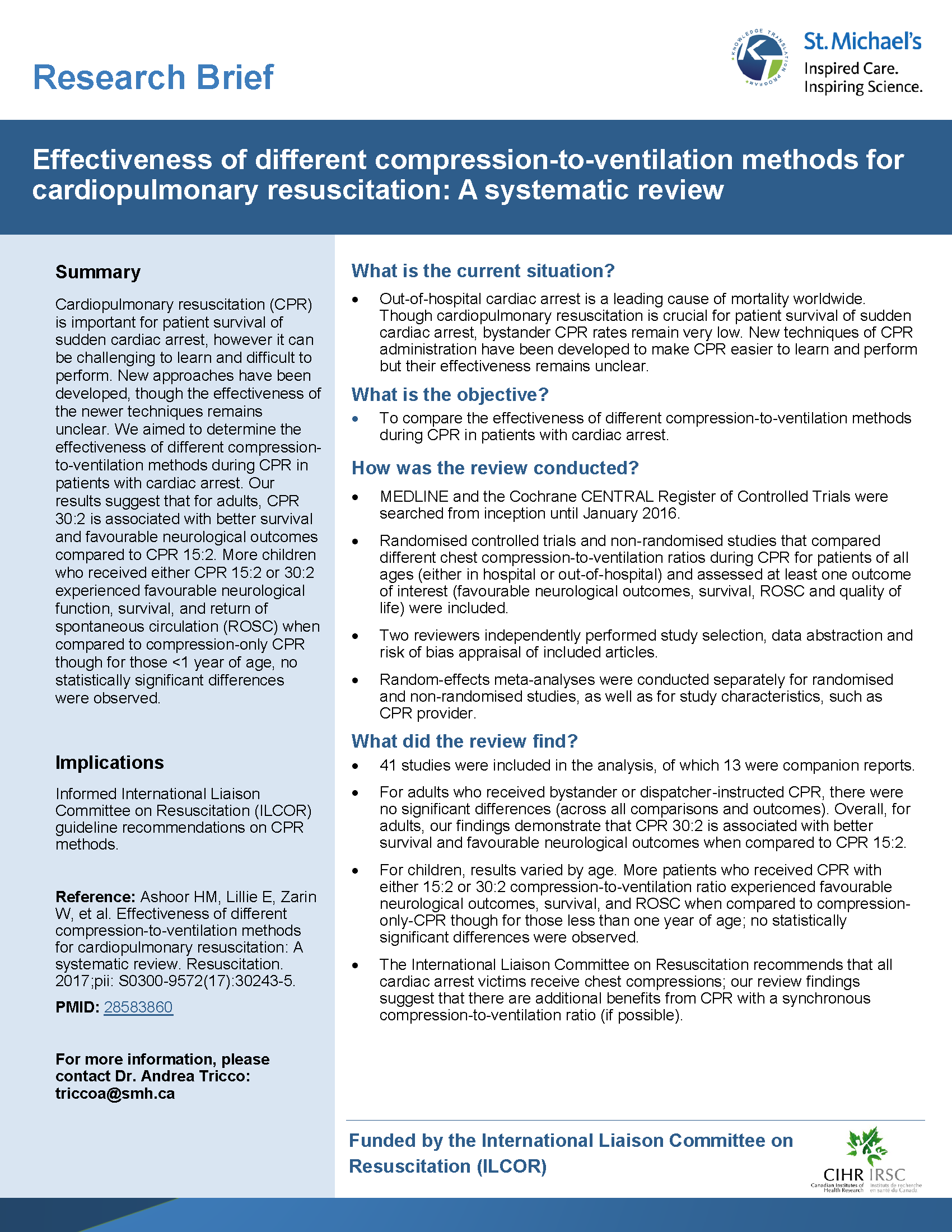Effectiveness of different compression-to-ventilation methods for cardiopulmonary resuscitation: a systematic review
Ashoor HM, Lillie E, Zarin W, Pham B, Khan PA, Nincic V, Yazdi F, Ghassemi M, Ivory J, Cardoso R, Perkins GD, de Caen AR, Tricco AC. Effectiveness of different compression-to-ventilation methods for cardiopulmonary resuscitation: a systematic review. Resuscitation. 2017 Sep;118:112-25. doi: 10.1016/j.resuscitation.2017.05.032.
Share Buttons [span][/span]
[ssba-buttons] [/sidebar] [sidebar-content]- Informed International Liaison Committee on Resuscitation (ILCOR) guideline recommendations on CPR methods
- Our results demonstrated that for adults, CPR 30:2 is associated with better survival and favourable neurological outcomes when compared to CPR 15:2
- For children, more patients receiving CPR with either 15:2 or 30:2 compression-to ventilation ratio experienced favourable neurological function, survival, and return of spontaneous circulation when compared to CO-CPR for children of all ages, but for children <1 years of age, no differences were observed
Almetrics:
[/sidebar-content]Category : KS Projects
Date : 06 Jan 2020



